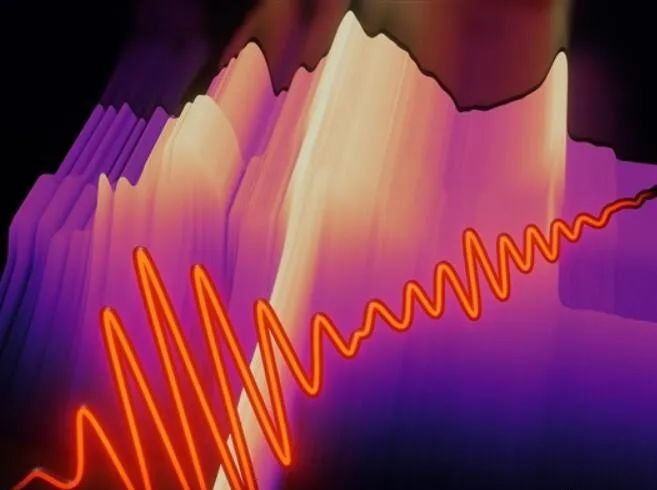Analytical optical methods are vital to modern society because they allow for the rapid and safe identification of substances in solids, liquids or gases. These methods rely on light interacting differently with these substances in different parts of the spectrum. For example, the ultraviolet spectrum has direct access to electronic transitions inside a substance, while terahertz is very sensitive to molecular vibrations.
An artistic image of the mid-infrared pulse spectrum in the background of the electric field that generates the pulse
Many technologies developed over the years have enabled hyperspectroscopy and imaging, allowing scientists to observe phenomena such as the behavior of molecules as they fold, spin or vibrate in order to understand cancer markers, greenhouse gases, pollutants, and even harmful substances. These ultrasensitive technologies have proven useful in areas such as food detection, biochemical sensing, and even cultural heritage, and can be used to study the structure of antiquities, paintings, or sculptural materials.
A long-standing challenge has been the lack of compact light sources capable of covering such a large spectral range and sufficient brightness. Synchrotrons can provide spectral coverage, but they lack the temporal coherence of lasers, and such light sources can only be used in large-scale user facilities.
In a recent study published in Nature Photonics, an international team of researchers from the Spanish Institute of Photonic Sciences, the Max Planck Institute for Optical Sciences, Kuban State University, and the Max Born Institute for Nonlinear Optics and Ultrafast Spectroscopy, among others, report a compact, high-brightness mid-infrared driver source. It combines an inflatable anti-resonant ring photonic crystal fiber with a novel nonlinear crystal. The device delivers a coherent spectrum from 340 nm to 40,000 nm with a spectral brightness two to five orders of magnitude higher than one of the brightest synchrotron devices.
Future studies will use the light source’s low-period pulse duration to perform time-domain analysis of substances and materials, opening up new avenues for multimodal measurement methods in areas such as molecular spectroscopy, physical chemistry or solid state physics, the researchers said.
Post time: Oct-16-2023






